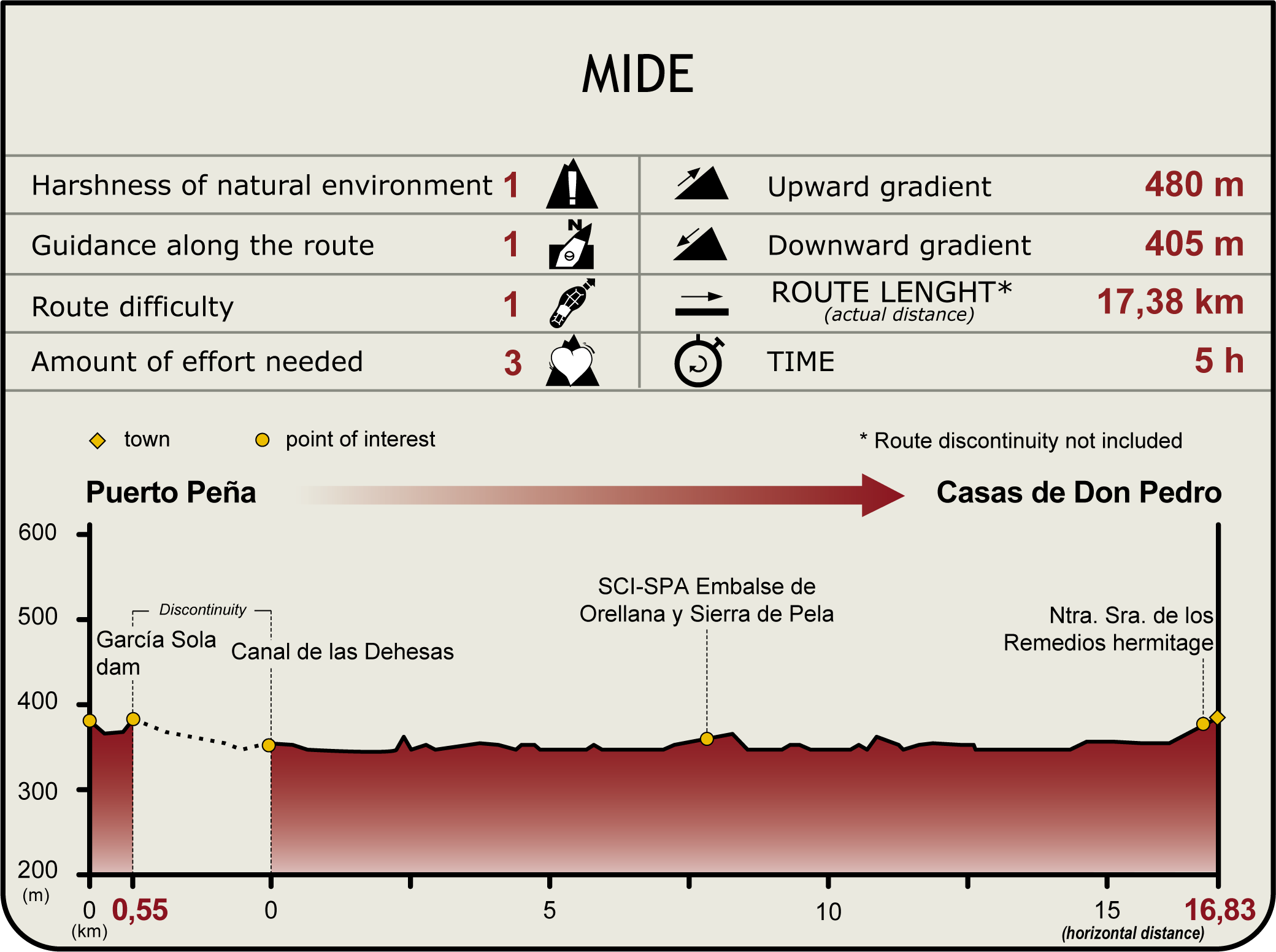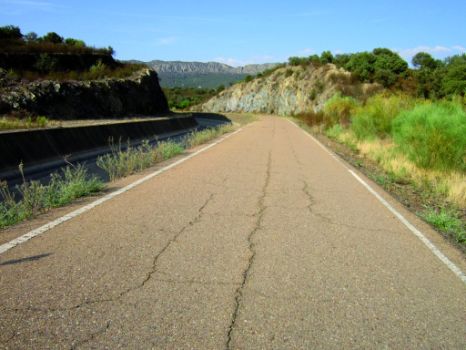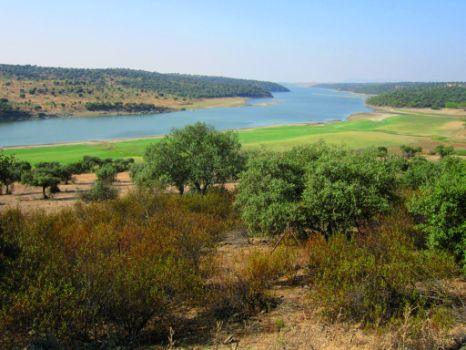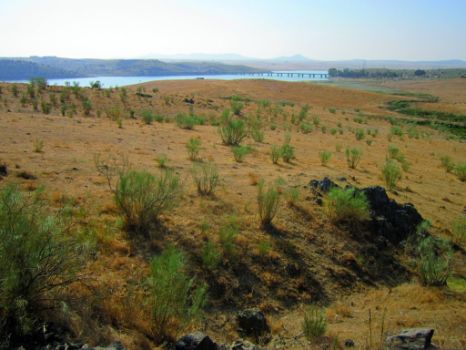Net of Natural
Trails

Stage 22: Puerto Peña - Casas de Don Pedro
Description
Through Canal de las Dehesas route
The Stage begins on the beaches at Puerto Peña, downstream from the diversion dam. Throughout the rest of the route, the Trail ventures through the service road of Dehesas Canal, a hydraulic work along the slope of the Guadiana Valley, overlooking the river and its vegetation.

The Stage begins at the Puerto Peña recreational area with artificial beaches on García de Sola Reservoir, a pier for small, motor boats, picnic areas, a beach bar and other public facilities. It continues east along the road that led to Puerto Peña Beach in Stage 21. From here, it heads towards the dam and follows the crest road, with stunning views of the reservoir and the River Guadiana looking downstream. The flow and width of the river increases from this point onwards, as it draws closer to the tail of Orellana Reservoir, the third reservoir after Cíjara and García de Sola.
One can also enjoy sweeping views from the bridge over the N-430 and the dam, including the woodlands along the banks or the almost vertical rocky walls, which mark the end of the Puerto Peña Mountain Range against which the dam is built.
The bridge, built on very high pillars, is an impressive feat of engineering that dominates the landscape from the beginning of the Stage.

Immediately after crossing the dam, the Trail is interrupted for 1.5 km, as it merges onto the BA-7113 on the left bank of the Guadiana. At the intersection with the N-430, the Trail continues its route and crosses the national road via an underpass. It now turns right, crosses the Dehesas Canal, and continues along the service road of the hydraulic work until almost the end. The paved road, which is in good repair, runs along the left side of the canal with the Guadiana Valley always visible.
The canal initially runs through a forest landscape, with dense shrub formations dominated by rockrose (Cistus sp.) and holm oak (Quercus ilex). Along the left bank of the Guadiana Valley, pastures alternate with holm oak dehesas where livestock graze. One can occasionally see shrub formations similar to those on the opposite side, where small bird observatories have been installed.

The Trail, and the canal along which it runs, gradually approaches the River Guadiana. As the distance shortens, the river widens, and becomes more visible, dominating the views of the valley. One can take a break at the rest area overlooking the river.
Throughout the Stage, several footbridges over the canal provide access to the opposite bank and the various livestock farms in the area through which ran the right-of-way. It also passes next to two sluice gates, although the canal is currently out of service.
The bridge on the road to Puebla de Alcocer dominates the landscape of the last stretch of the route leading to Orellana Reservoir. The view is unobstructed, owing to the gently sloping terrain, the position of the canal high above the River Guadiana, and the general lack of trees or scrubs during the last few kilometres of the Trail.

The route finally arrives at the intersection of the canal and the BA-137. Heading along the left side of this road, this Stage merges with Stage 23, although the parish church of Casas de Don Pedro (refer to Stage 23) is, respectively, the endpoint and start point of each Stage.
It should be noted that Stage 22 traverses through “Embalse de Orellana y Sierra de Pela” SCI (Site of Community Importance) and SPA (Special Protection Area for Birds). Furthermore, “Embalse de Orellana y Sierra de Pela” has been designated a Protected Natural Reserve.
Sites of interest
Profile

Highlights
Further information
Dehesas Canal route
The Dehesas Canal route (15 km) runs along the tail of Orellana Reservoir, where the highest biodiversity is concentrated. The dominant landscape is holm oak dehesas, as well as rockrose and yellow broom thickets, interspersed with grasslands at the beginning of the route. One can view numerous waterfowl species from the track using telescopes or binoculars, including Mallard (Anas platyrhynchos), Great Crested Grebe (Podiceps cristatus), Cinnamon Teal (Anas cyanoptera), Common Pochard (Aythya ferina), Eurasian Wigeon (Anas penelope) and Common teal (Anas crecca). In winter, the Common Crane (Grus grus) arrives in thousands to roost in some sections of the reservoir. In late summer, over one hundred Black Storks (Ciconia nigra), the highest regional concentration, come together here after mating. At twilight, and with a little patience, one can see otters (Lutra lutra) fishing in shallow waters and ponds.
Near Casas de Don Pedro, in a livestock grazing dehesa, is a check dam that forms a small lagoon, where a variety of waterfowl species, and even the black stork, congregate.






